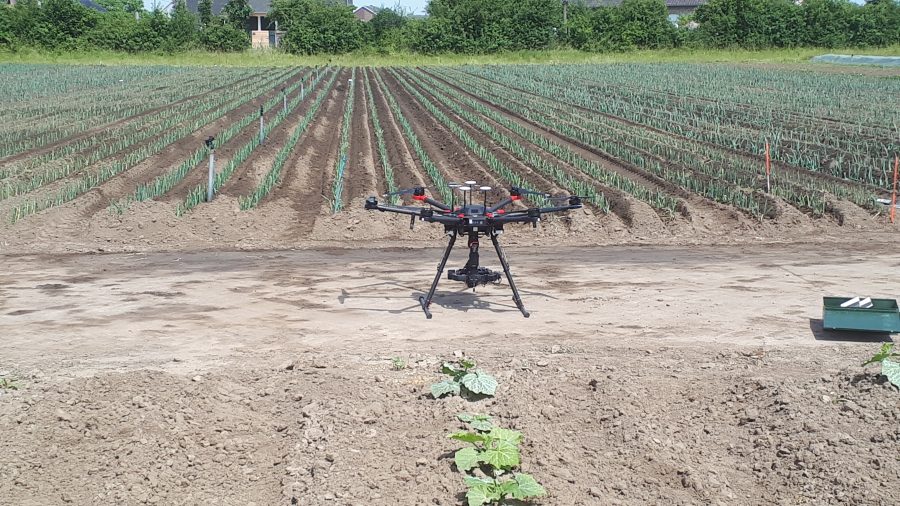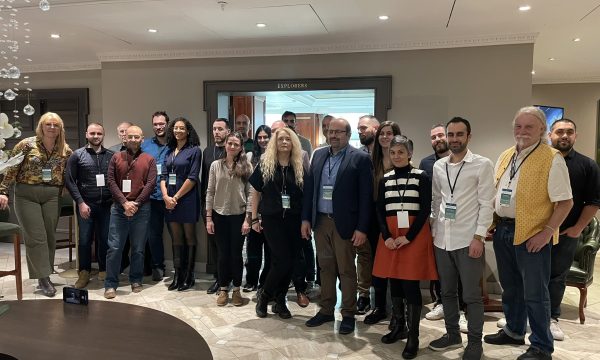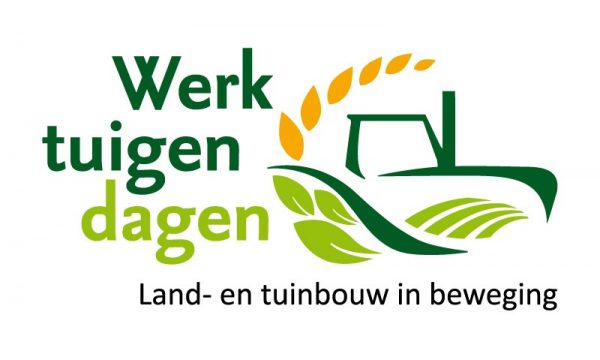Press release Potatoes as viewed by the drone: the results

On a technology test field, ILVO conducted an unusual potato-precision farming trial during the 2022 growing season. Every three days, a drone with a camera took images of the plants (and any weeds). An artificial intelligence (A.I.) computer system learned to recognize where anomalies occurred in the images, and what they meant.
These meanings are "taught" to the system by having each image deviation systematically checked in the field itself by botanical specialists. In time, this will result in an A.I. algorithm that will make a sufficiently accurate and early diagnosis on its own. This can then help with farm management.
Peter Lootens (ILVO expert on plants and drone image interpretation): “Depending on the application, we place either an ordinary visual camera or a multispectral, hyperspectral or thermal sensor on the drones. Then we always combine our knowledge of plants with the enormous digital calculation capacity required for a correct interpretation. Precision agriculture with A.I. really requires multidisciplinary knowledge building.”
A next step is to have smart agricultural machines for weed control, crop protection or irrigation (in case of drought stress) and intervene locally. On the basis of a digital task map, these machines treat only the spots/plants that need it.
The agricultural machines are either existing agricultural machines or in some cases the newer digitalized generation. At ILVO, they are sometimes also prototypes of smaller and more accurate autonomous agricultural robots.
Simon Cool (ILVO's Living Lab Agrofood Technology and expert on robotics and automation): “The ambition of precision agriculture is to use digitalization and data to get to a point where we can intervene more precisely in terms of time but also in terms of place. Then we will no longer need to give the entire field the same treatment. With the new technology, we are aiming for a very sharp reduction in the volume of crop protection products used, up to 80% less. Europe has a target of at least 50% reduction in practice by 2030.”
ILVO sees three preliminary results after the completion of the technological potato experiment in the field:
- For plant disease there was some success in using images to detect Phytophthora en Alternaria. A hyperspectral sensor can currently detect incipient changes on the potato plant as early as a few days after infection. Instead of the classic preventive full-field spraying, 7 to 8 times per season in a dry year, the plot was sprayed only 6 times because the frequent observations allowed us to wait longer before spraying. In addition, the frequent drone and field observations were able to help the warning systems give more accurate warnings.
- The weeds were controlled entirely on a site-specific basis using an innovative weed burner on our CIMAT robot, a prototype from the Interreg project of the same name in collaboration with several partners including Inagro and the KULeuven. Specially, for the first time we managed to transmit the processed image data from the drone in semi-real time. This was possible because of the improved superfast computing power, and because of the available 5G connectivity using a 5G antenna from Proximus.
- Finally, one finding is that the components and apps in agricultural machinery and tractors, from different brands, cannot all talk to each other smoothly yet. Smoother data transfer will still require a lot of integration work.


